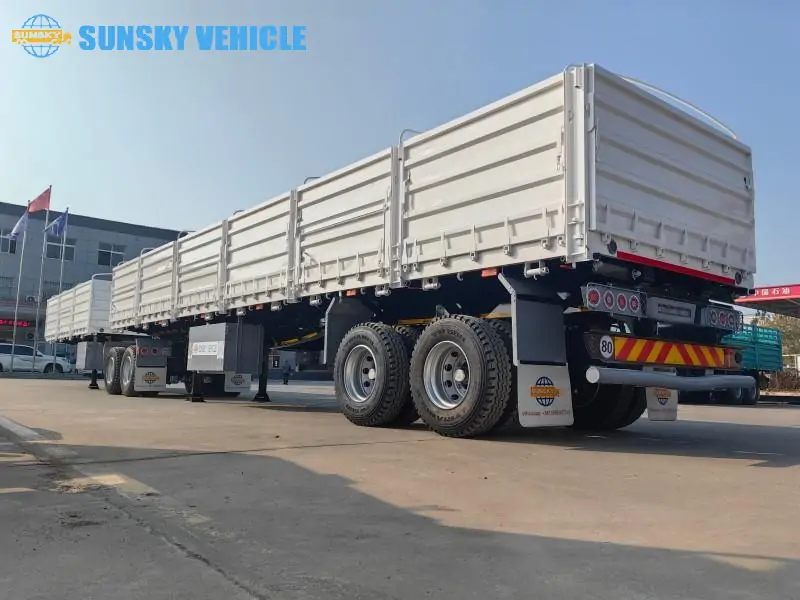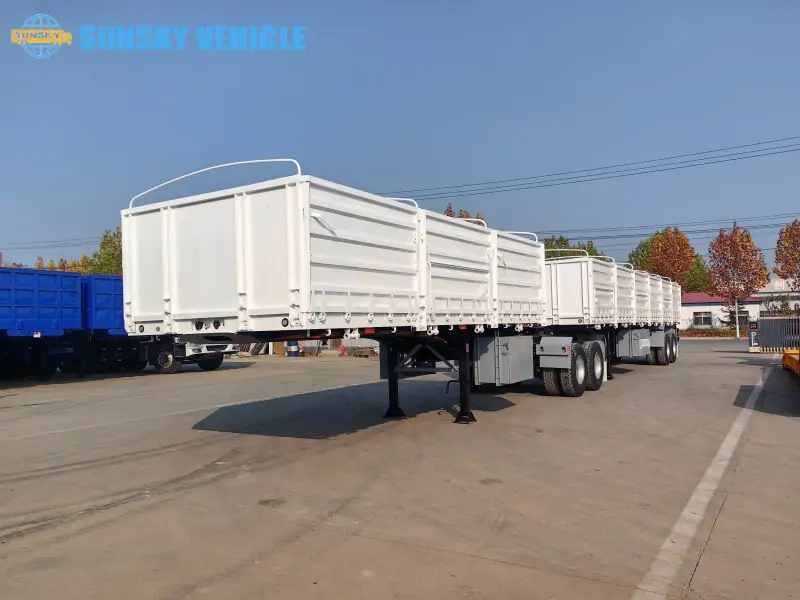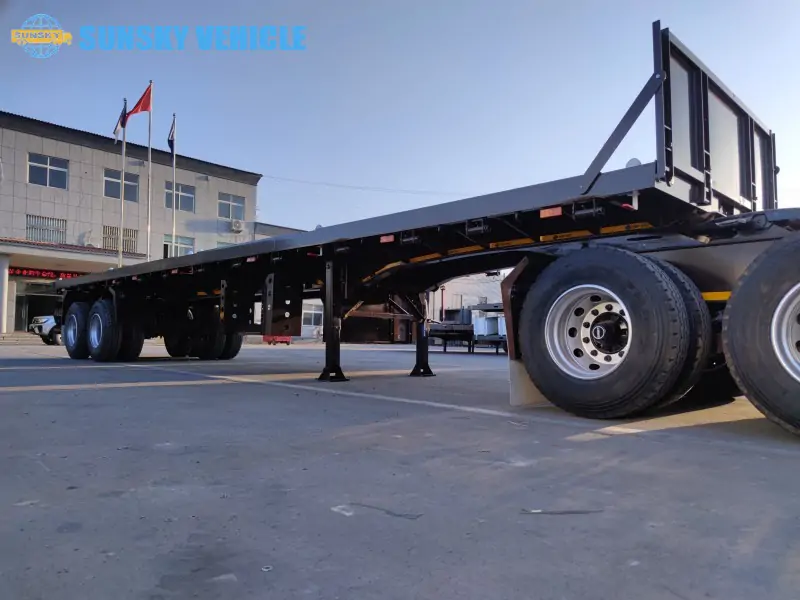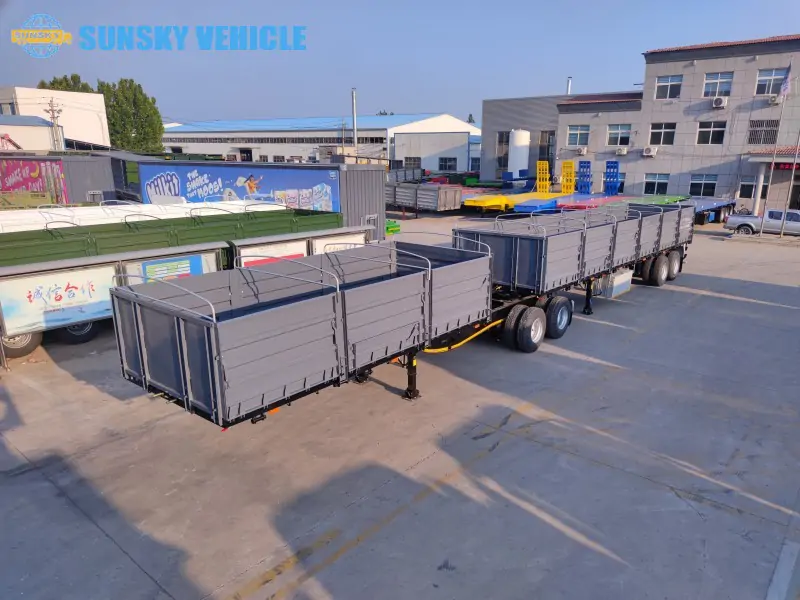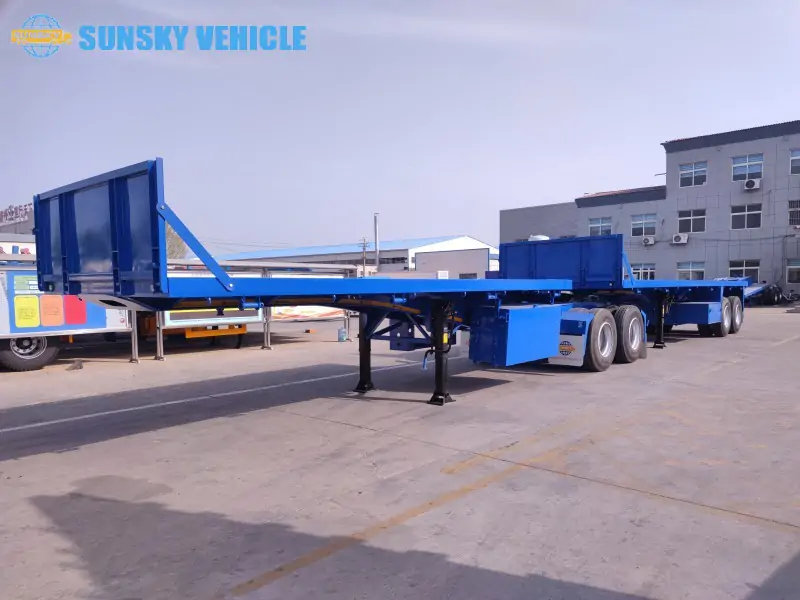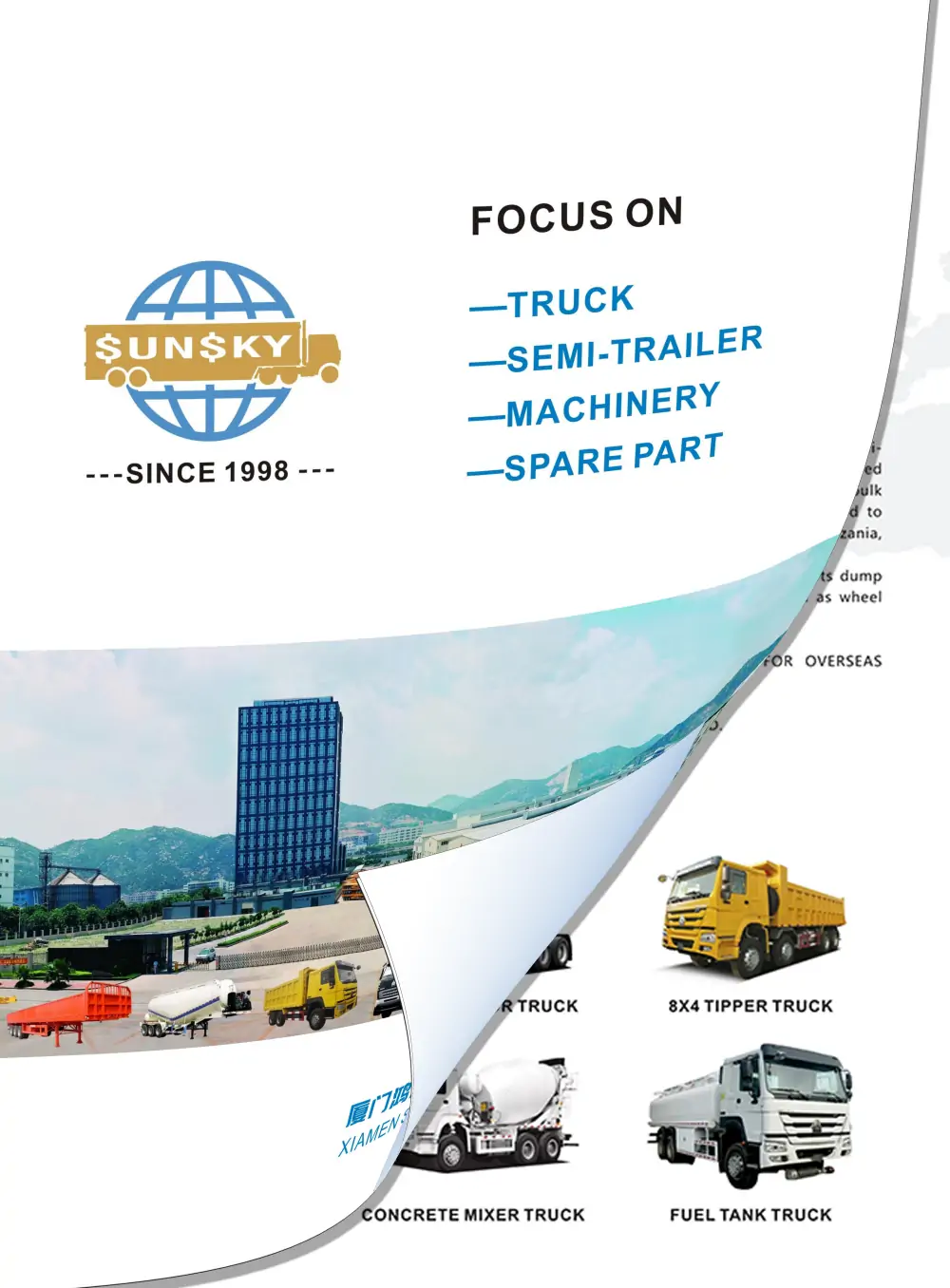The Efficiency Beast of the Transport Industry
In the highly competitive world of modern logistics, efficiency and payload capacity are critical factors determining profitability. When traditional truck and trailer configurations fall short of meeting the demands of large-scale transportation, an ingeniously designed heavy-haul solution emerges: the Superlink Trailer.
Why the Need for a Superlink?
Long-haul freight and the transportation of bulk materials (such as minerals, agricultural products, or fuel) place a massive demand on the capacity of a single trip. While using two separate trucks for transport is possible, it incurs double the labor, fuel, and operational costs. The Superlink Trailer was engineered precisely to solve this pain point: it allows a single truck tractor to haul two full-sized trailer units, pushing the limits of single-trip payload capacity while significantly optimizing fuel and labor resource utilization. For companies aiming to maximize transportation economics, the Superlink is an indispensable heavy-duty asset.
What Exactly is a Superlink Trailer?
A Superlink Trailer is a heavy-duty road transport combination consisting of a Truck Tractor pulling two separate Semi-Trailers. These two trailers are not connected directly but are linked via a specialized coupling unit—typically a Dolly (Converter Dolly) equipped with a fifth-wheel coupling. This unique configuration allows the Superlink to maximize its Gross Vehicle Mass (GVM) and overall carrying capacity while maintaining the operational flexibility and safety of the vehicle combination under specific national regulations. It is especially suited for high-volume, long-distance linehaul operations.
Superlink Trailer’s Authoritative Design and Engineering
The sophistication of the Superlink Trailer lies in its coupling system. It is not merely two trailers strapped together, but a complex, highly regulated engineering system designed for maximum safety, stability, and high capacity.
Core Structure Analysis: What are the Three Components?
A Superlink configuration is defined by three primary moving parts:
- The Truck Tractor (The Prime Mover): The vehicle providing the power and braking control.
- The Lead Semi-Trailer (The Front Unit): A standard semi-trailer that connects directly to the Truck Tractor’s fifth wheel.
- The Converter Dolly (The Coupling Unit): This is the key component. It attaches to the rear of the lead trailer and features its own axles and a fifth-wheel coupling at the top. This fifth wheel is then used to connect the second trailer, turning the combination into an A-train or double-trailer setup.
This dolly connection ensures that the rear trailer can articulate and track safely behind the first, which is crucial given the enormous overall length of the combination.
Dimensions and Configuration Overview
Superlinks are built to utilize the maximum legal road limits, making their specifications impressive. The configuration is often named based on the axle arrangement of the two trailers (e.g., 2+2, 3+3, or 2+3).
- Axle Configuration (e.g., 2+2 or 3+3): This refers to the number of axles on the lead trailer plus the number of axles on the rear trailer. Common setups often use three axles per trailer (3+3) to distribute heavier loads more evenly.
- Common Length Range: Superlink combinations typically range from 18 meters (approx. 59 feet) up to 22 meters (approx. 72 feet), depending on regional legislation (such as in Australia or South Africa, where they are highly popular).
- Maximum Payload Capacity: Due to the dual-trailer setup, Superlinks can achieve total payloads often ranging from 40 tons (88,000 lbs) up to 60 tons (132,000 lbs), depending heavily on the specific configuration and the jurisdiction’s Gross Vehicle Mass (GVM) regulations.
Why Choose a Superlink? Four Core Advantages
For logistics managers and fleet owners, the decision to invest in a Superlink configuration is driven by compelling economic and operational benefits. These trailers transform high-volume bulk transportation from a costly process into a highly optimized operation.
Maximized Payload Capacity
The most immediate and profound benefit of the Superlink is its capacity. By doubling the available cargo space and chassis support, a single truck can move the freight that would typically require two separate journeys. This capability is vital for industries dealing with dense, heavy materials such that, even when constrained by GVM regulations, the Superlink provides the optimal balance between maximum legal weight and usable volume. This is essentially a force multiplier for fleet efficiency.
Significant Operational Cost Savings
Operational savings are where the Superlink truly shines:
- Reduced Labor: Only one driver is required to haul two full loads, immediately cutting labor costs by nearly 50%.
- Fuel Efficiency: While hauling a heavier load, a single, modern truck tractor is far more fuel-efficient than operating two separate trucks over the same distance, leading to substantial savings on diesel.
- Toll and Permit Costs: In many jurisdictions, road usage tolls and certain permits are calculated per vehicle, not per payload unit, making the Superlink a single-vehicle solution for a double load.
Flexible Loading and Unloading Operations
The A-train configuration of the Superlink offers an underrated benefit: flexibility at the depot. Since the two trailers are independent units connected by a dolly, the driver can easily “drop” the rear trailer at a consolidation point or a separate dock and proceed with the lead trailer, or vice-versa. This simplifies complex logistics chains and accelerates turnaround times at receiving and loading bays, improving the entire supply chain velocity.
Superior Weight Distribution and Road Safety
The multi-axle design of the Superlink system (e.g., 6 or 7 axles in total) allows the massive weight to be distributed much more evenly across the road surface. This not only complies more effectively with stringent axle-load limits but also reduces wear and tear on the road infrastructure and on the truck’s components. Furthermore, modern Superlinks incorporate advanced braking systems across all units, ensuring reliable stopping power and enhanced stability, provided the combination is properly maintained and operated.
Challenges to Consider Before Deploying a Superlink
While the economic advantages are compelling, deploying a Superlink Trailer fleet requires careful consideration of operational complexities, maintenance demands, and compliance hurdles. A complete cost-benefit analysis must weigh the efficiency gains against these potential drawbacks.
High Operational Barrier and Demanding Driving Requirements
The length and articulated nature of a Superlink significantly increase the complexity of maneuvering, especially in tight spaces, urban environments, or during yard operations.
- Wider Turning Radius: Due to the double articulation points (the truck-to-first-trailer and the dolly-to-second-trailer connection), Superlinks require a much wider turning radius compared to standard semi-trailers, limiting access to certain depots or delivery sites.
- Driver Skill Premium: Operating these combinations safely and efficiently demands highly skilled, trained, and experienced drivers. The “tail-swing” effect and the requirement for precise spatial awareness mandate specialized driver certification in many regions.
Increased Maintenance Costs and Complexity
The Superlink configuration inherently means more components, which translates directly to higher maintenance demands and costs over the lifetime of the asset.
- Double the Components: The fleet owner must maintain essentially two trailers, including double the number of tires, axles, brake assemblies, suspension systems, and lights.
- Dolly Maintenance: The converter dolly itself is a critical piece of equipment subject to intense wear and tear. Regular inspection and servicing of its fifth wheel and drawbar assembly are vital for safety and stability.
- Downtime Risk: A malfunction on any of the three units (truck, lead trailer, or rear trailer/dolly) can potentially sideline the entire combination, leading to significant unplanned downtime.
Strict Regulatory Constraints and Route Limitations
Superlink operations are heavily dependent on local and national road transport legislation. This restricts their usage to approved routes and regions.
- Geographic Restrictions: Unlike standard trailers, Superlinks are not universally legal. They are prominent in regions like Australia (as Road Trains or specific B-Double variations), Southern Africa (highly common), and certain parts of the Americas, but they are often restricted or outright banned in most European and heavily urbanized areas due to their length.
- Design Compliance: Operators must ensure the combination meets specific dimension (length, height, width) and mass (GVM) limits, often requiring special permits for designated routes. Ignoring these regulations can lead to severe fines and vehicle seizure.
Superlink Trailer’s Optimal Use Cases
Superlink trailers are not general-purpose freight carriers; they are highly specialized assets that perform best when deployed in environments that capitalize on their sheer size and efficiency. They are vital components of heavy industry and large-scale logistics operations.
Bulk Material Transport: Coal, Ore, Grain, and Sand
The most common and effective application for Superlinks is the movement of high-volume, dense bulk materials. These industries require maximum capacity per trip to maintain low operational costs and high output.
- Configurations: Superlink setups are frequently utilized as Side Tippers (for quick and efficient offloading of mining materials like coal and ore), Drop Sides, or specialized Grain Hoppers in agricultural regions.
- The Advantage: Since these materials often reach the legal weight limit before the volume limit in single trailers, the Superlink’s double capacity directly translates to a significant boost in tonnage moved daily. This makes them indispensable in mining corridors and farming belts for transporting goods from remote production areas to ports or processing centers.
Container and Palletized Freight: Long-Distance Point-to-Point Logistics
Beyond raw materials, Superlinks play a crucial role in organized logistics networks, particularly for linehaul movements between major hubs.
- Configurations: For palletized goods and containers, the Superlink uses Flat Deck (platform) or Skeletal (Skel) trailer configurations. A standard Superlink setup can often accommodate the equivalent of two full 40-foot containers or multiple 20-foot containers in a single, highly efficient trip.
- The Advantage: Logistics centers rely on high throughput between distribution centers (DCs). By moving double the amount of Container Freight or Palletized Goods (such as fast-moving consumer goods, food, or general merchandise) between these points, the Superlink dramatically reduces congestion and accelerates turnaround time at major depots.
Regional Popularity: Reasons for its Prevalence
The Superlink Trailer is not equally common globally. Its use is heavily concentrated in regions with vast distances, large-scale resource industries, and favorable regulatory environments that permit combinations of extreme length.
- South Africa: Superlinks are arguably the backbone of South African freight, commonly seen moving goods between ports (like Durban) and inland economic hubs (like Johannesburg). The established road network and high-volume commodity trade (mining and agriculture) favor this efficient setup.
- Australia (as Road Trains/B-Doubles): While often classified differently (like B-Doubles or Road Trains), the concept of multi-trailer configurations driven by sheer distance and heavy industry is most advanced here. The vast distances between major cities and remote resource extraction sites make high-capacity combinations the only economically viable option.
- Southeast Asia & Specific American Corridors: In parts of Southeast Asia and specific designated corridors in the Americas, Superlinks are gaining traction for similar reasons: improving the efficiency of cross-country transport and accommodating the needs of rapidly expanding industrial sectors.
What’s the Difference? Superlink vs. Similar Configurations
In the heavy transport sector, there are several multi-trailer combinations designed for high capacity. While the Superlink (an A-Train setup) is efficient, two other prominent designs—the Interlink and the B-Double—offer different compromises between stability, maneuverability, and capacity. Understanding these differences is crucial for selecting the right equipment.
Interlink Trailer
The term Interlink is often used interchangeably with Superlink, particularly in certain regions (like parts of South Africa). However, technically, an Interlink often refers to a slightly more compact double-trailer unit.
- Key Distinction: Interlinks are sometimes designed with shorter trailers or different axle spacing to be more manageable in areas where road geometry is less forgiving. Their focus is often on achieving a high payload while offering better maneuverability than a full-sized Superlink, making them suitable for navigating tighter spaces or shorter distribution routes.
B-Double (B-Train)
The B-Double is fundamentally different from the Superlink/Interlink due to its method of coupling, which is highly preferred in regions like North America and Australia for its stability.
- Key Distinction: In a B-Double, the second semi-trailer connects directly to the first semi-trailer via a fifth wheel mounted on the rear of the lead trailer. No separate dolly is required. This creates a combination with only one articulation point between the two trailers, earning it the name B-Train. This direct connection provides superior tracking, stability, and makes reversing significantly easier than with the dolly-connected Superlink (A-Train). However, it sacrifices the flexibility of dropping the rear trailer independently without using specialized equipment.
Key Comparison Table
| Configuration | Connection Method | Typical Stability & Handling | Primary Advantage |
|---|---|---|---|
| Superlink (A-Train) | Dolly (Converter) Connection | Fair (More difficult to reverse) | Extreme flexibility; high capacity, independent trailer drop-off. |
| B-Double (B-Train) | Direct Fifth Wheel on Lead Trailer | Excellent (Highly stable; easier to reverse) | Superior stability, tracking, and predictable handling. |
| Interlink | Dolly/Other (Often Compact A-Train) | Good | Balanced payload and enhanced maneuverability for complex routes. |
Robust and Durable, Achieve Exceptional Transport Start your project today and get a high-performance semi-trailer solution tailored specifically to your unique needs.
Is a Superlink Trailer Right for Your Logistics Needs?
The Superlink Trailer stands as an undisputed champion in the realm of high-capacity logistics. It is not just a larger truck; it is a strategic asset designed for companies where maximizing efficiency and payload per run is the primary driver of profitability. While it demands specialized driving skills, careful maintenance, and requires adherence to strict regional regulations due to its length and complexity, the enormous savings in labor, fuel, and time for long-haul bulk and large-volume transport often make it the most economically sensible choice. If your business involves moving massive quantities of freight across great distances and approved corridors, the Superlink represents the ultimate solution for optimizing your supply chain performance.
Consult the Experts at SUNSKY VEHICLE
Are you considering upgrading your fleet to handle high-volume, long-distance transport? The transition to Superlink configurations requires expertise in regulatory compliance, asset financing, and customized trailer configurations (tipper, flat deck, skeletal). Contact the experts at SUNSKY VEHICLE today for a customized consultation. We will help you analyze your operational routes and payload requirements to design the Superlink configuration that delivers maximum returns on your investment.

